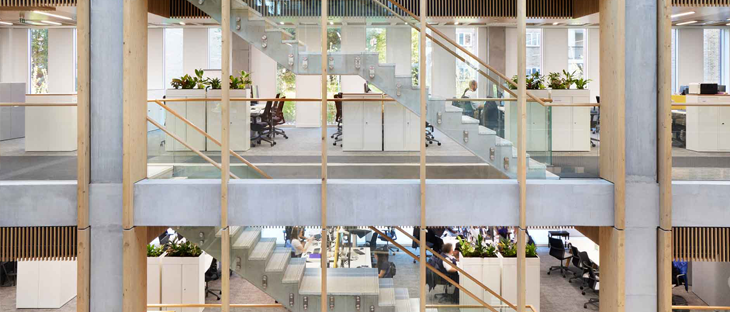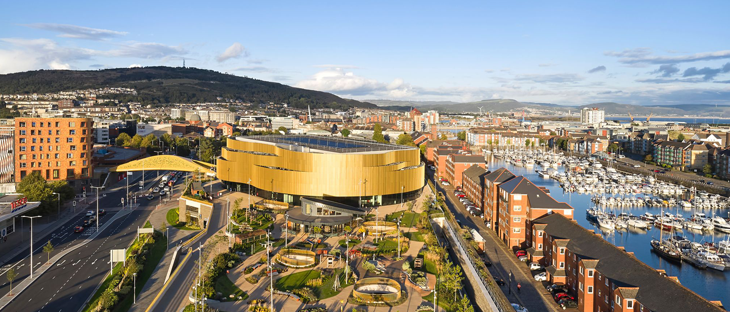Sustainability Series 2025

Running since 2022, The Concrete Centre’s Sustainability Series is an annual four-week programme of online events and resources offering the latest guidance, progress updates and expert discussions on the design, specification and use of sustainable concrete.
The 2025 series explored key themes including the decarbonisation, circular economy, climate resilience and concrete’s role in supporting biodiversity and nature-based solutions. It also focused on practical strategies to reduce carbon through design and specification interventions.
________________________________________________________________________________________

Colne Valley Viaduct is the UK’s longest rail bridge, made from over 1,000 precast segments weighing up to 140 tonnes each. Lower-carbon concretes, including mixes with up to 70% GGBS, helped cut embodied carbon by 28% compared to the original High Speed Rail Bill design.
Week 1: Accelerating decarbonisation of cement and concrete
The concrete industry is collaborating to decarbonise and is making good progress on its roadmap to achieve beyond net zero by 2050. This week will provide an update of progress and feature a range of innovations and ongoing initiatives to showcase just some of the work being undertaken to reduce the carbon impacts of concrete in manufacture and construction.
The launch event for The Concrete Centre’s Sustainability Series 2025 featured the latest update of the MPA's UK Concrete and Cement Industry Roadmap to Beyond Net Zero. The event highlighted ongoing initiatives aimed at accelerating the decarbonisation of cement and concrete across the value chain. These include the expansion of testing facilities for innovative lower carbon concrete and its deployment in live construction projects, as well as progress of carbon capture and storage (CCS) in the UK.
This live event included presentations and a panel discussion with representatives from major clients and infrastructure developers. They shared insights into the challenges and opportunities involved with advancing the transition to net-zero concrete.
Catch up on-demand: The event was recorded and is available as an on-demand resource. The webinar will be available shortly.
________________________________________________________________________________________

High levels of GGBS and a lean ribbed-slab structure have helped to reduced embodied carbon by 30% at Tatehindle’s admirably restrained HQ for the Salvation Army. Image: Jack Hobhouse.
Week 2: Design and specification interventions to reduce carbon using concrete
There are many opportunities to reduce carbon through the design and specification of a concrete frame. This week will offer practical guidance on specifying concrete and its constituents and introduce tools that help with the comparison of embodied carbon, cost and construction time across various frame options. We also share the latest advice on achieving lower-carbon solutions in current concrete projects.
Catch up on-demand: This webinar was delivered live on 2 October. A recording of the session is available here.
________________________________________________________________________________________

Swansea Arena Green Roof Garden, the largest green roof in Wales. Courtesy of Acme.
Week 3: Resilience and Support of Nature
Urban trees, green roofs and sustainable urban drainage bring multiple benefits to our built environment. These include support for biodiversity and human wellbeing, mitigating the heat island effect and reduced risk of surface water flooding. This live online event explores how concrete can be used to support their integration, to improve the climate change resilience of our cities.
Catch up on-demand: This webinar was delivered live on 8 October. A recording of the session is available here.
________________________________________________________________________________________

Wigan Civic Centre, Wigan, a regeneration project where original concrete features are exposed and former offices are reused for contemporary workspaces. Courtesy of shedkm.
Week 4: Circular Concrete
Retaining structures in use at their highest value for as long as possible is recognised as good practice to support a more circular economy practice. This event brings together members of the design teams for recent projects in which concrete structures have been successfully and innovatively reused. They will explain their approach, the benefits of optimising the durability and long life potential of concrete, and how they overcame any challenges along the way.
Catch up on-demand: This webinar was delivered live on 16 October. A recording of the session is available here.
Week 4 resources
________________________________________________________________________________________